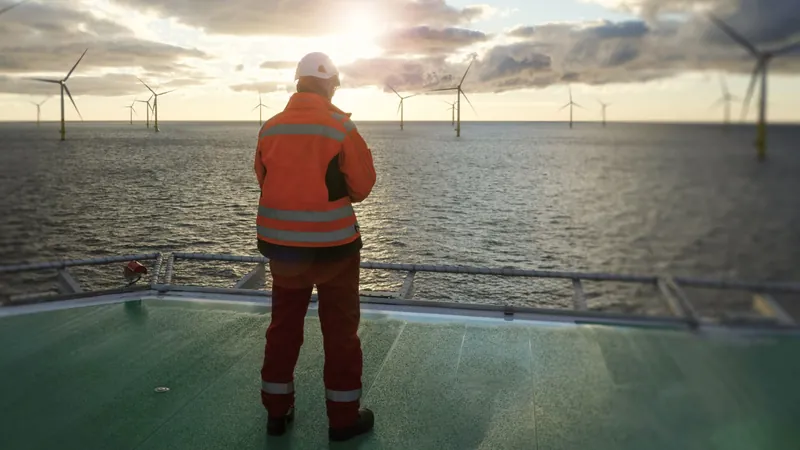
Dive into the Future: Key Trends in Ocean-Climate Tech Investments
2025-01-15
Author: John Tan
In an era of urgent environmental concerns, ocean-climate nexus technology is making waves in the investment landscape. Over the past decade, the capital investment in this vital sector in the U.S. has displayed a remarkable growth trajectory. Starting from a modest $56 million in 2014, the influx catapulted to $146 million in 2015. The subsequent years witnessed some fluctuations, with investments oscillating between $114 million and $185 million from 2016 to 2020, before reaching an impressive peak of $677 million in 2021. Although the momentum waned slightly in 2022, falling to $401 million, the sector is back on the rise, projected to rebound to $587 million by the end of 2024.
Interestingly, the share of ocean-climate nexus technology within overall U.S. climate tech investments has exhibited more variability. Beginning at a mere 0.68% in 2014, this share jumped to 1.83% in 2015, but experienced a dramatic dip to just 0.20% by 2018. However, post-2020 has revealed a positive trend, culminating in a peak share of 2.68% in 2024. This signifies growing recognition of the ocean’s pivotal role in combating climate change.
The Rise of Startups in Ocean Tech
Recent data shows a flourishing ecosystem for ocean-climate tech startups, particularly from venture capital. Notably, those that secured funding since 2022 primarily emerged in the seed stage. The distribution among different sectors has exhibited a relatively balanced landscape between organics and industrials, each claiming a substantial 29% share among the seed-stage startups.
As the rounds of investment advanced, however, the representation of organics and industrials began to shift. By the Series A stage, the organics sector represented 10%, while industrials dipped slightly to 9%. This trend continued into Series B, where both sectors accounted for 6% of the total. When examining the more mature Series C stage, participation dwindled significantly, with organics at just 1% and industrials at 3%.
Moreover, it's noteworthy that all carbon sector startups raising funds since 2022 fell strictly within the seed or Series A stages, constituting 5% and 1% of the venture-backed ocean-climate tech ecosystem, respectively.
The Future is Blue!
As climate change continues to challenge our planet, ocean-climate nexus technologies represent more than just an investment opportunity; they are potential game-changers in our fight against global warming. With both startup activity and investment capital on an uptrend, stakeholders and innovators in this blue tech space are poised to spearhead significant advancements.
Investing in ocean-climate tech is not just an economic move; it’s a crucial step toward sustainable development and planetary health. As we look to the future, the question remains: Are you ready to ride the wave of innovation? The ocean's potential holds the key to a sustainable future—and the time to act is now!


 Brasil (PT)
Brasil (PT)
 Canada (EN)
Canada (EN)
 Chile (ES)
Chile (ES)
 Česko (CS)
Česko (CS)
 대한민국 (KO)
대한민국 (KO)
 España (ES)
España (ES)
 France (FR)
France (FR)
 Hong Kong (EN)
Hong Kong (EN)
 Italia (IT)
Italia (IT)
 日本 (JA)
日本 (JA)
 Magyarország (HU)
Magyarország (HU)
 Norge (NO)
Norge (NO)
 Polska (PL)
Polska (PL)
 Schweiz (DE)
Schweiz (DE)
 Singapore (EN)
Singapore (EN)
 Sverige (SV)
Sverige (SV)
 Suomi (FI)
Suomi (FI)
 Türkiye (TR)
Türkiye (TR)